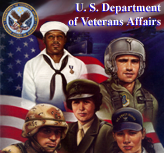|
412 Russell Senate Bldg.Washington D.C. 20510 Democratic StaffPhone Number:(202) 224-9126 825A Hart Senate Bldg.Washington D.C. 20510 Republican StaffPhone Number:(202) 224-2074 |

Question 1: Are we prepared to transition disabled servicemembers from active duty to civilian life? Question 2: Where can I get more information about Survivor benefits? Question 1: Are we prepared to transition disabled servicemembers from active duty to civilian life? OutreachThe VA has many outreach programs for veterans returning from the field of combat. As service members separate from the military, VA contacts them to welcome them home and explain what local VA benefits and services are available. VA has made a wide selection of general information available to returning combat veterans online through a direct "Iraqi Freedom" link from VA's Internet page (www.vba.va.gov/EFIF). This website provides information on VA benefits, including health care services, DoD benefits, and community resources available to regular active duty service members, activated members of the Reserves and National Guard, veterans, and veterans' family members. Working with the Department of Defense, the VA has developed a brochure entitled "A Summary of VA Benefits for National Guard and Reserve Personnel." The brochure summarizes the benefits available to this group of veterans upon their return to civilian life. It is available online at:http://www.va.gov/environagents/docs/SVABENEFITS.pdf and http://www.defenselink.mil/ra/mobil/pdf/va_benefits_rc.pdf VA also actively participates in discharge planning and orientation sessions for returning service members. With the activation and deployment of large numbers of Reserve/National Guard members for the onset of military actions in Afghanistan and Iraq, VA, in collaboration with DOD, has greatly expanded outreach to returning Reserve/National Guard members and their family members. National and local contacts have been made with Reserve/National Guard officials to schedule pre- and post-mobilization briefings for their members at the unit level. Returning Reserve/National Guard members can also elect to attend the formal 3-day Transition Assistance Program (TAP) workshops provided by VA personnel at mobilization stations. Knowing that this is an optional program for the Reserve/National Guard, VA has developed strategies to brief family members while the service member is still deployed and has arranged time on the unit training schedule and during reunions and family day activities. A critical concern for veterans and their families is the potential for adverse health effects related to military deployments. VA has produced a brochure that addresses the main health concerns for military service in Afghanistan, another brochure for the current conflict in Iraq, and one that addresses health care for women veterans returning from the Gulf region. These brochures answer health-related questions that veterans, their families, and health care providers have about these military deployments. They also describe relevant medical care programs that VA has developed in anticipation of the health needs of veterans returning from combat and peacekeeping missions abroad. These are widely distributed to military contacts and veterans' service representatives; they can also be found on VA's website. Other concerns are the potential health impact of environmental exposures during deployment. Veterans may have questions about their symptoms and illnesses following deployment. VA addresses these concerns through such media as newsletters and fact-sheets, regular briefings to veterans' service organizations, national meetings on health and research issues, media interviews, educational materials, and websites, like http://www.va.gov/environagents. HealthThe VA health care system is the largest integrated health care system in the United States. The U.S. News and World Report on July 18, 2005 reported that VA hospitals "are models of top-notch care.” The VA includes general medical care, community based outpatient clinics, alcohol and drug-dependence treatments, prosthetic and sensory aid services and long-term care facilities. Health care is also available for dependents and survivors through the CHAMPVA program. While the VA is unable to provide all services in all areas, the VA is expanding every year. The VA serviced over 3.4 million patients in 2004 and filled more than 100 million prescriptions. And this number is only expected to grow in the coming years. The VA is in the forefront of the medical industry. The VA is largest user of electronic medical records in America, and is responsible for more than 10,000 medical research projects. Because the VA recognizes the need to work with the community, the VA also works closely with local medical universities and organizations. As a matter of fact, more than half of all American doctors have been trained in at least one VA hospital. In order to better serve the veterans of America, the VA has established an eight-group priority system to balance demand with available resources. For example, those veterans who in are in the first priority group are those who are 50% or more service-connected disabled and determined to be unemployable due to their conditions due to their service. Contrarily, veterans in priority group eight are nonservice-connected veterans with zero percent noncompensation who agree to pay copayments. In order to find out more about eligibility for VA health care, please visit http://www.va.gov/healtheligibility/home/hecmain.asp. Question 2: Where can I get more information about Survivor benefits? The following web site (www.vba.va.gov/survivors) is dedicated to the surviving spouses and dependents of military personnel who died while in active military service and to the survivors of veterans who died after active service. VA is dedicated to quality information and assistance to family members suffering the loss of their husbands and wives, sons and daughters, and mothers and fathers. While most benefits are the same regardless of whether the service member or veteran died on active duty or during civilian life, there is additional information for those veterans who have died in service. You also will find information from other federal agencies and organizations that offer related benefits and services to survivors and dependents. |
|
|
|
||


